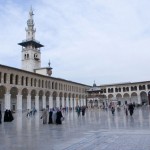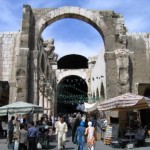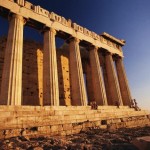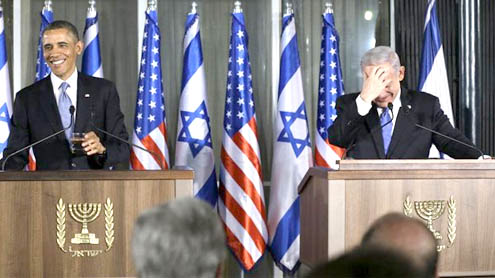 As a rule I have been visiting places by choice but at times it was, I may say, by compulsion. Damascus was one such destination which was never on my ‘hit’ list but I visited it on the invitation of a Syrian friend. Although historically important, the place had never fascinated me. The visa was no problem and I was received at the airport by my friend. We drove straight to his house in central Damascus where he enhanced his credentials like a good host.
As a rule I have been visiting places by choice but at times it was, I may say, by compulsion. Damascus was one such destination which was never on my ‘hit’ list but I visited it on the invitation of a Syrian friend. Although historically important, the place had never fascinated me. The visa was no problem and I was received at the airport by my friend. We drove straight to his house in central Damascus where he enhanced his credentials like a good host.
Capital of Syria, Damascus’ is its largest city situated on the southern bank of River Barada, It is among the oldest continuously inhabited cities in the world, dating back to 8000-10000 BC.
It was ruined and re-built so often over the centuries that layer after layer of history and ancient civilization lie buried under the modern metropolis and excavations are simply not possible. The old city is surrounded by a fortification wall with eight gates leading into the walled enclave. Down town district has narrow streets and looks different from the modern neighborhoods. Damascus has been ruled by the Romans and Byzantinians in the recorded history and has also been a seat of the Umayyad Empire. The Ottomans ruled it for almost 400 years before it was made a French mandate following the Second World War. The worst period of foreign invasion this historic city ever witnessed was that of Mongol conqueror Timurlunk whose forces massacred the inhabitants, except the artisans, who were lucky to be deported to Samarkand, Timur’s capital in Central Asia. Timur besieged Damascus and put the city to sack. A huge number of Damascenes were slaughtered and human skulls were piled up to erect a minaret. A city square bearing the name Burj al ruus (Tower of heads) was built in memory of the ghastly holocaust.
The Syrian culture and way of living has two sides to it. A certain class of ladies is attired in western dresses while there are others who cover their faces behind the veils. For years I had witnessed my host’s spouse dress up in skirt and blouse and hang around in the balcony smoking cigarettes. Back home in Damascus I did not have a glimpse of hers. The male and female quarters in their ‘not too big’ an apartment were segregated and ladies were confined to the private section of the lodging. The meals were sumptuous and elaborate and we were served with a Syrian delicacy which was quite similar to nargasi koftay that we make in Pakistan.
Umayyad or the Grand mosque is one of the largest in the world and one of the oldest sites of continuous prayers since the rise of Islam. It is a symbol of one of the great periods of proud Muslim civilization and a masterpiece of architectural ingenuity. This site was originally occupied by a ‘temple of god’ which became Temple of Jupiter with the arrival of the Romans and later became St. John’s church under the Byzantine Christians. The construction of this rectangular mosque started in 714 AD and it was burnt by Timur during his barbaric invasion. It was rebuilt later. A shrine in the mosque is said to contain the head of John the Baptist.
The most memorable thing that I saw in Damascus was the mausoleum of Sultan Salahuddine Eyyubi (E. Saladin) who fought and defeated the famous Christian crusaders; King Philip of France, Richard the lion hearted from England and Frederick 1 of Rome. This mausoleum is located in a garden near the northwestern corner of Umayyad mosque. We offered fateha at the tomb of the great Muslim warrior, who was a fierce leader, a great tactician and a Muslim liberator. Sultan Sahuddine Eyyubi, born in Iran, hailed from Tikrit in Iraq and grew up and was educated in Syria. Egypt, Syria, Iraq, Hejaz and Yemen were all under his domain. He fought the third crusades, also known as the Kings’ crusades’ and recaptured Jerusalem. Germany donated a marble sarcophagus for the burial of Salahuddin Eyyubi’s mortal remains but it lies unused in his tomb as Sultan’s body was buried in a wooden box. His statue stands on a pedestal in front of the historic Citadel of Damascus. The tomb of Zainab bint Ali is a few miles from the capital, off the main road to Damascus International Airport, and is visited by hundreds of thousands of Shia Muslims every year.
Historical Souk Hamiddya is just a few minutes walk from Umayyad mosque and Sultan’s mausoleum. It is an old fashioned Arab market with not much to boast about. It is a dirty conglomeration of variety of stores with small time shop keepers catering to lower income group of customers. Haggling is a usual feature of these markets. Parks and café culture is very common in the metropolis. People while away their time having ice cream or their all time favourite Turkish coffee. The Ottoman Turks have left behind in their former domains, besides their buildings and monuments, the Turkish coffee as a lasting legacy. Its flavour is really delightful and if you develop a taste for it you cannot leave ever.
Damascus is a city of 4.5 million people but the transportation network is obsolete. Like in Pakistan the Damascenes use buses and mini buses for daily commuting. The mini buses, similar to our Suzuki vans, are gaudily decorated, just like our highway freight trucks, whose model was also given as a souvenir to Queen Elizabeth 2 on her last trip to Pakistan. A retired piece of the same is on display in the premises of Lok Virsa (National Heritage) museum in Islamabad. I wonder why we have become aesthetically so bankrupt. Damascus has a large number of these mini buses plying on the city roads and one can visualize the eye catching view which these moving pieces of art must be presenting with over flowing passengers clinging to the outside of the vehicle. Corruption is wide spread like in any other third world country. Political hierarchy is confined to one family for the last over three decades. Syria is ruled by Assad dynasty in the garb of democracy. The country has one party system.
Syria is predominantly a Muslim majority country with only 10% non-Muslims to account for. 75% of the population is sunni Muslims. The number of mosques in Damascus are well over two thousand, the most famous being the Umayyad mosque. There are some Christian districts where there are more churches than the mosques. It was interesting to know the origin of the name of this capital city. Damashaq, in local dialect, means a fast moving camel and as the city was built very swiftly it was given this name. The other theory is that it is named after Damashaq, the great grand son of Noah, who according to the legend built this city. This later theory sounds more hypothetical.
































